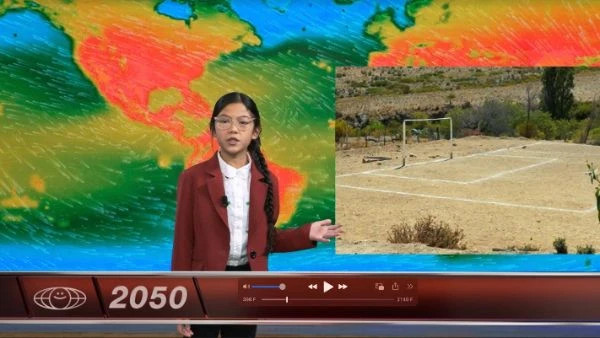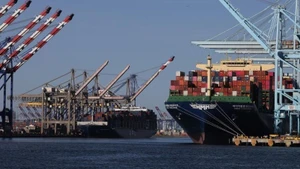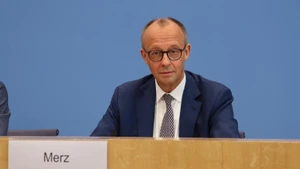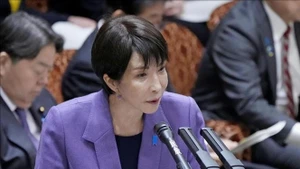The initiative is jointly carried out by the United Nations Development Programme (UNDP), the World Meteorological Organisation (WMO) and The Weather Channel.
The 1-minute in English, French, Spanish, Arabic, Hindi, Swahili, Thai and Portuguese was broadcast in more than 80 countries and territories on many television channels and online platforms. In the news, the kids updated weather information, along with a world map showing the continuous rise of the earth’s temperature.
The report also presented climate forecasts until 2050, with images of forest fires and collapsed houses due to rising river and sea levels. WMO Secretary-General Celeste Saulo stressed that the decisions made today will shape the lives of future generations. This campaign is an urgent call to action for the future of humans and the green planet.
The United Nations Children's Fund (UNICEF) estimated that about 1 billion children are at high risk of being affected by climate change, increasing risks to children such as clean water scarcity, disease, air pollution, and extreme weather patterns. They are environmental factors considered to have a serious impact on the growth of children.
UNICEF Executive Director Catherine Russell said the consequences were harsh.
According to UNICEF, extreme weather events caused by climate change have forced 43.1 million children in 44 countries to leave their homelands in the past five years, 95% of whom were displaced by storms and floods.
UNICEF expert Laura Healy said that the published data is only superficial because the consequences of climate change for children are much more serious.
The female expert stressed that children affected by extreme weather patterns due to climate change also face other traumas, such as being separated from their parents or becoming victims of human trafficking.
UNICEF also predicts that floods caused by rising river and sea levels will likely cause 96 million children to evacuate within the next 30 years, while cyclones could also force 10.3 million children to leave home.
With nearly 23 million people forcibly displaced in the past five years, China, India and the Philippines have become the countries with the largest number of people displaced due to climate change.
However, according to UNICEF, the above three countries witness the largest number of displaced people due to their large populations and the governments’ evacuation plans to prevent natural disasters.
In contrast, African countries and small island nations recorded the highest number of displaced children. Specifically, about 76% of all children in the Dominican Republic had to evacuate in the past five years, while this number in Cuba and Saint-Martin Island in the northern Caribbean was 30%.
Climate change is one of many reasons for the failure to fully enforce children's rights. The United Nations Deputy High Commissioner for Human Rights Nada Al-Nashif comprehensive social protection is essential to ensure that children's rights are respected, protected and enforced in every country, in every situation.
According to Nada Al-Nashif, the UN Convention on the Rights of the Child and the International Covenant on Economic, Social and Cultural Rights state that all children have the right to enjoy social welfare and other benefits, and social protection measures must be available, adequate and accessible.
However, according to a 2023 report by the International Labor Organisation (ILO) and UNICEF, more than 1.77 billion out of 2.4 billion children worldwide have missed out on adequate social protection.
The lack of social protection during childhood has a lasting impact on children's happiness, development, health and educational outcomes; this affects children's enjoyment of human rights, including the right to life, education, health, a full life and playing.
















